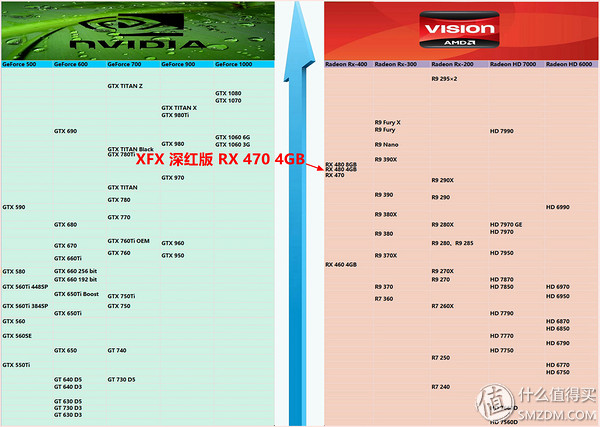As a player who has been playing DIY for more than 20 years, I like to play the video card most. Whether it is NVIDIA or AMD, as long as it is a good video card, it is worth playing. In recent years, I have won many overclocking world records, N card and A card has. I can't figure out why I can attribute myself to N or A, but I found that there are many netizens who are in a bad mood. If I buy a certain A card, I see a test that says the same level of N card. Better, then we must spray a few words, regardless of whether the evaluation is fair and equitable, anyway, as long as they do not meet their wishes, you can spray, and now the law does not stipulate that you can not spray, so now the spray is particularly large. In fact, regardless of whether you spray or not spray, the performance of the video card will be there and will not increase. I do not understand that if you buy a card with a few hundred dollars or a few thousand dollars, do you need to increase your love for this card to the height of faith? Regardless of AMD or NVIDIA, if there is no competition on the day of the dominance, then users are waiting to enjoy the monopoly brought about by the monopoly. I am studying Chinese medicine. Chinese medicine emphasizes the yin and yang. The yin and yang balance of the human body will be healthy, and yin or yang deficiency or hemiplegia will be sick. The graphics card market is also where both A-card and N-card exist at the same time, and the same development will restrict each other, so that users can get good products at a relatively suitable price. Once the market balance is broken, it can only be haphazard. Just like VIA and SIS in the past, you can compete with Intel in the chipset market. Then Intel has to work out how to make products better and price control lower. Now that VIA and SIS are finished playing, the chipset market is only The rest of the AMD long time to update a motherboard, you look at Intel's chipset, Z170 compared to the Z87 how much quality improvement?
Closer to home, the N-card is getting tired, visiting the A-card before the National Day, and seeing a newly-listed RX 470, actually dare to claim that "My chip is carefully selected at a high frequency," and picking the chip is very eye-catching for overclockers. The wording, people who play overclocking know that the level is no higher than the special chip, overclocking champion = technology + special chip. So I started with a piece to try what kind of physical chip. This card is priced at 1599 yuan, just slightly lower than the GTX 1060 3GB and RX 480 4GB, so by the way can look at this GTX 1060 and RX 480 contention of the actual performance of the spoiler.

XFX RX 470 4G Crimson Limited Edition, the price and XFX's Black Wolf evolution are the same 1599 yuan, more expensive than the public version of the RX 470 one hundred, but the dark red version of the frequency is a little higher than the black wolf, the fan replaced White fan, other from the appearance do not see any difference. Before lighting the graphics card, I would like to say a few points about my current view of the A-card market. Before the MSI A card is very good, especially the HAWK series, but now the mainland MSI has not done A card, and AMD's best AIB manufacturers to count Dylan Hengjin, Sapphire and XFX. XFX XFX, as the old N-Card boss, did get strong support from AMD after switching to the AMD camp. Now the AMD graphics card can be the first of these three brands. Dylan and Sapphire are actually the same family and are AMD's pro-sons. Even if XFX is to be his son, it will be. After completion of the launch, ASUS and Radium's A-card will be listed one after another, and other channel brands will also ship one after another. In contrast, Dylan, Sapphire, XFX these three non-public AMD graphics cards, in fact, only on the basis of the public version of some improvements, the real super-public version still have to look at ASUS, but unfortunately ASUS A card out It's slower and it's expensive. So now the range of optional AMD graphics cards is really not as much as NVIDIA graphics cards.
Like the RX 480, the RX 470 is based on the Polaris 10 core, codenamed Elesmere, using the GCN 4.0 architecture and 14nm process technology. The RX 470 is slightly lower in size than the RX 480, 32 computational units, 2048 stream processors, 128 texture processing units, 32 ROPs, and 256 bits of memory. The public version of the core Boost frequency 1206MHz (AMD graphics card can only see Boost frequency on GPU-Z, can not see the basic frequency), memory frequency 7000MHz. The graphics card TDP power 120W, lower than the RX 480 30W.
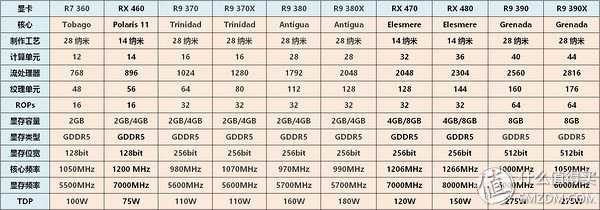
★ Unpacking ★
Crimson Limited Edition RX 470's box is almost exactly the same as that of the Black Wolf Evolution. It uses XFX's exclusive X-type box, but it does not specify a dark red limited edition on the outer packaging. The box shows some new features of the RX 470 graphics card: native support for Microsoft DX12, 14nm FinFET process, GCN4.0 architecture, Liquid VR technology optimization, support for HDR, and more. The white label indicates that this card has a Boost frequency of 1280 MHz.







The video card itself uses a black-and-white color scheme. The graphics card is black-brown as a whole, and only the fan blades are transparent white. The roots are not on the edge with the dark red. I also do not understand why it is called the dark red limited edition. The only red spot was a red sticker on the first fan, which states that the fan supports 0DB stop function.


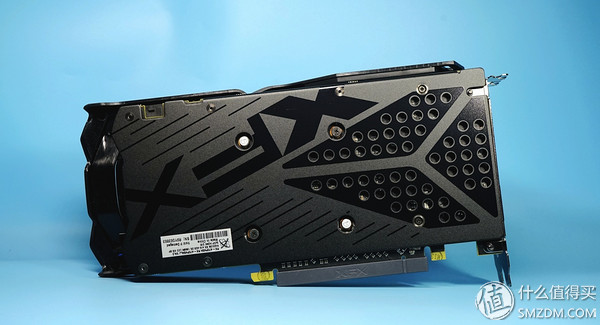
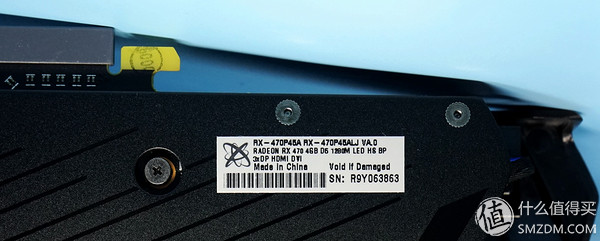
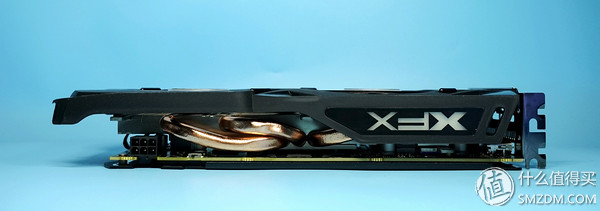
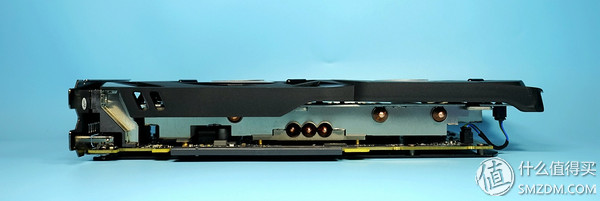
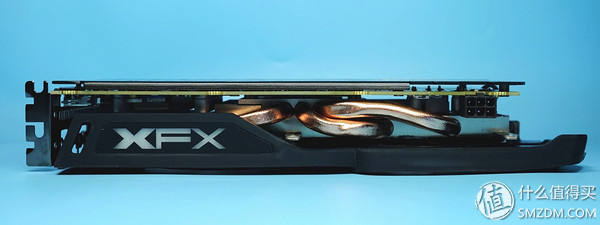
Crimson version of RX 470 length 24cm, taking up the thickness of two PCI slots, the compatibility of this size will be better, suitable for most of the chassis. On the back of the card is an anodized aluminum backplane with a number of hollow vents. The backplane and the PCB are covered with an insulating layer. The video output interface is standard with three Displayport 1.4 interfaces, one HDMI 2.0b interface, and one DVI-D interface. At the top of the radiator air duct is the XFX LED lamp. External power supply uses a 6pin interface, next to the dual BIOS switch that comes standard with the XFX graphics card. After the actual test, the two BIOS are exactly the same.
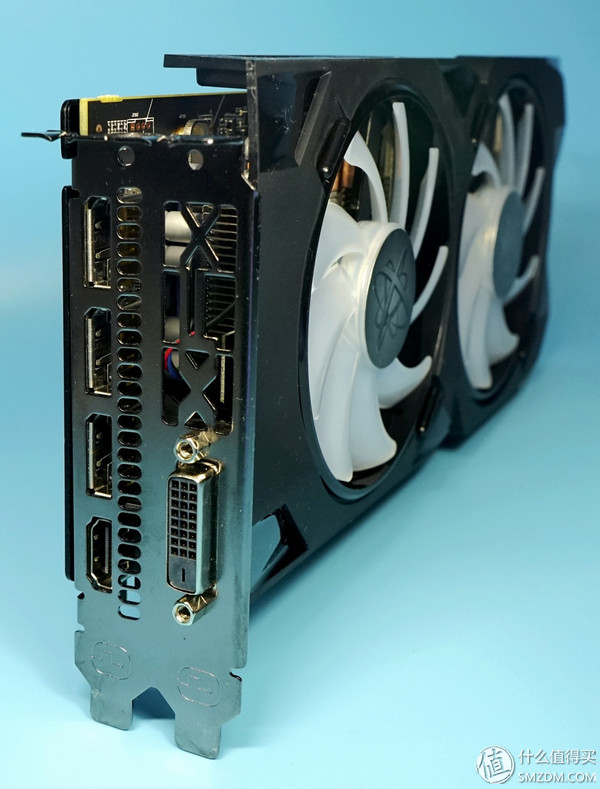
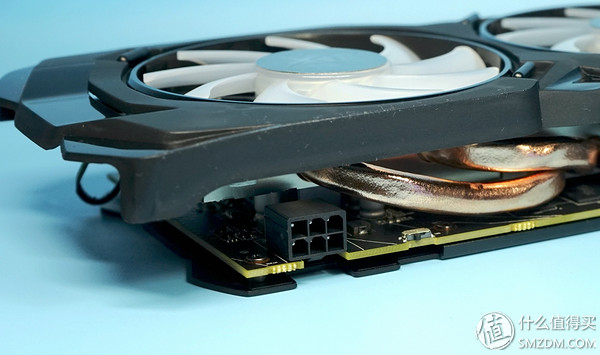
★ Dismantling ★

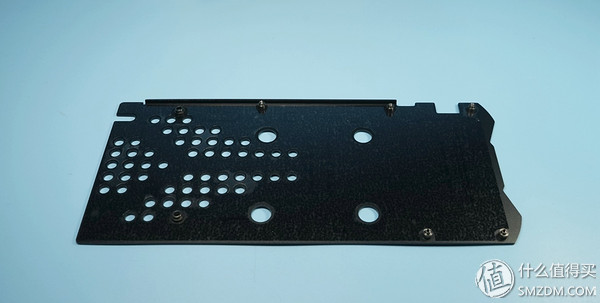

Crimson Limited Edition RX 470 uses a non-public version of the PCB, should be simplified from the RX 480 Black Wolf evolution, the overall greater than the public version of the PCB. The GPU core number is. The left side of the GPU core is the 5-phase GPU core power supply, and the XFX TureX inductor printed with the “X†is used. The right side of the GPU core is 1 phase memory power supply, which is slightly stronger than the 4+1 phase power supply of the public version. After all, the TDP of the RX 470 is only 120W, and then the luxury power supply is actually wasted. GPU core is surrounded by memory particles, using SK Hynix's GDDR5 particles, number AJR-ROC, the default frequency of 7000MHz, a single capacity of 512MB, a total of 8 4GB capacity. The PWM driver uses ON Semiconductor's NCP81022 chip to support 4+1 phase power management. External power supply, the Crimson version of the RX 470 is a single 6pin power input interface, the power supply interface next to the dual BIOS switch. Personally, I personally liked the dual BIOS design. One more BIOS would undoubtedly increase insurance for my players who like to modify the BIOS. There is no difference between the two BIOSes of this card, and there is no difference in frequency, so switching dual BIOS has no effect on the performance of the graphics card.



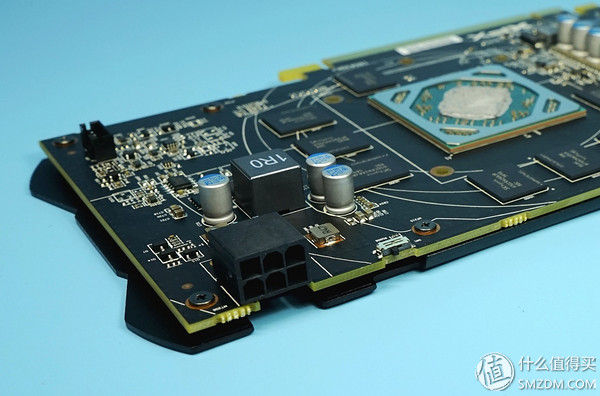
Crimson Limited Edition RX 470 is still using XFX's fourth-generation cool soul radiator. This heat sink is now commonly used in XFX's non-public version of the graphics card, the appearance is basically the same, depending on the specific graphics card power increase or decrease the number of heat pipes, as well as changing the appearance of color matching. The biggest feature of this heatsink is that the fan adopts the “PCB contact type†easy-to-clean design. The fan can be completely removed by pinching the two left and right buckles of the fan. There is no wire interference. The fan is connected to the contacts on the heatsink by means of four beryllium-copper contact springs so that the wires can be removed. The fans can be completely removed and cleaned. The fan's buckle also uses a fool-proof design. If it is not in the right direction, the fan cannot be installed. This prevents the user from installing the fan backwards.


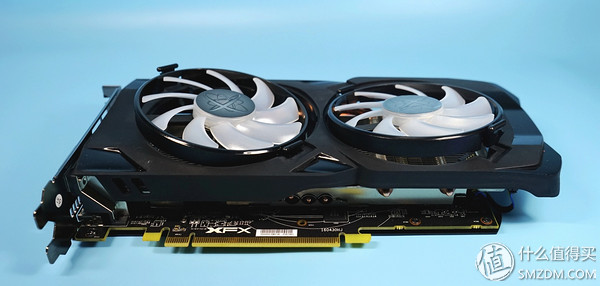


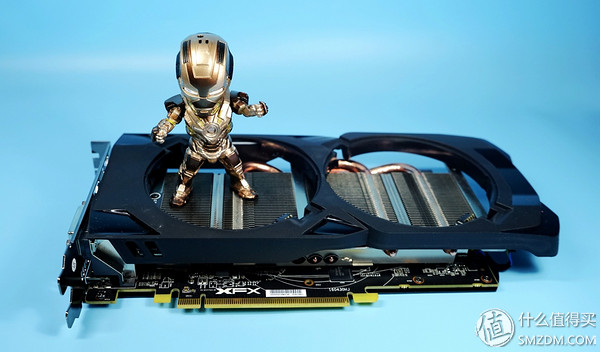

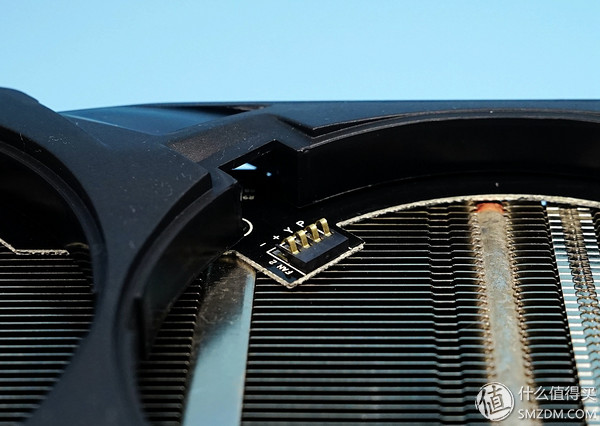
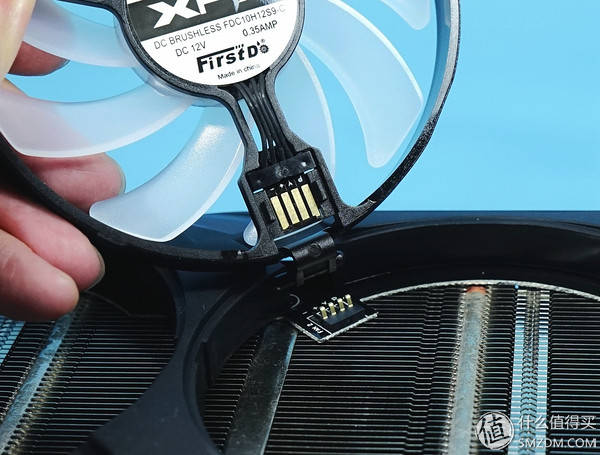
Radiator body uses a large area of ​​pure copper heat absorption base + 3 8mm pure copper heat pipe program, but the heat pipe does not have nickel plating, so it is easy to oxidation black, this to Tucao. The heat sink fins also adhere to the inductance of the PCB power supply circuit through the heat dissipation paste, so that the heat dissipation of the power supply circuit can be better assisted. However, the heat-absorbing base and the heat-dissipating fins are not in contact with the memory particles, so only the fans can be used to blow away the heat on the surface of the memory particles. Another point is that the LED light plate on the wind deflector is used together with the fan to take power from the PCB with a 4 pin interface, and the light color cannot be adjusted by software.

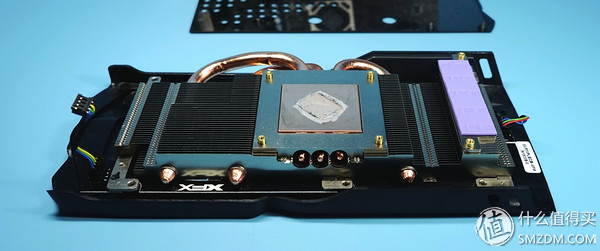
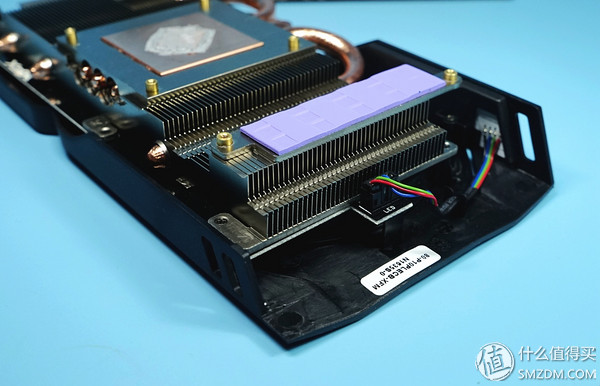


★Test ★
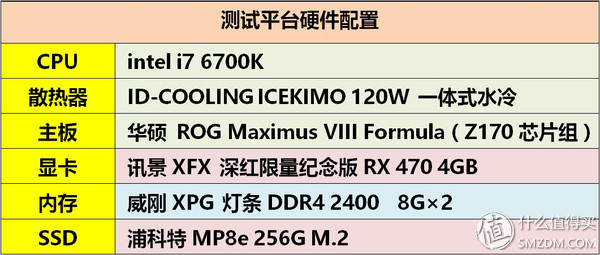
The test platform is still my old platform, the i7 6700K+ASUS M8F. As I said before, due to AMD's incompetence, intel now does not need much effort in updating products. The performance of the 3770+Z77 is actually not much weaker than the 6700+Z170. If it is not on the high-frequency DDR4 memory (DDR4 3000 and above), the gap between the two platforms is actually very small. The previously used Captain 360 integrated water cooling has been used by me, and the remaining three chief punk steam frameless fans are also ready to be packaged and sold. I haven’t spent any money on the purchase and I’m ready to try it out this time. . The CPU heat sink is replaced with the cheap ID-COOLING ICEKIMO 120W integrated water-cooled top. Memory or use Avision XPG DDR4 2400 light bar, the default voltage is 1.2-16-16-39-312 at 1.2V, 1.35V can be overclocked to DDR4 3100 (15-15-15-36-403) . Many netizens said that the overclocking rate is obviously less than Samsung B die particles. Now the memory of Samsung B die particles can go beyond DDR4 4000 without a word. Before that, I had a pair of the Zickey Trident Z DDR4 3200 CL14 which was easily overclocked DDR4 4000 (15-16-16), and had already been sold. However, Samsung B die particles are now used in the default high-frequency memory, usually more than DDR4 3200 memory, DDR4 2400 memory I have not seen the use of Samsung B die.


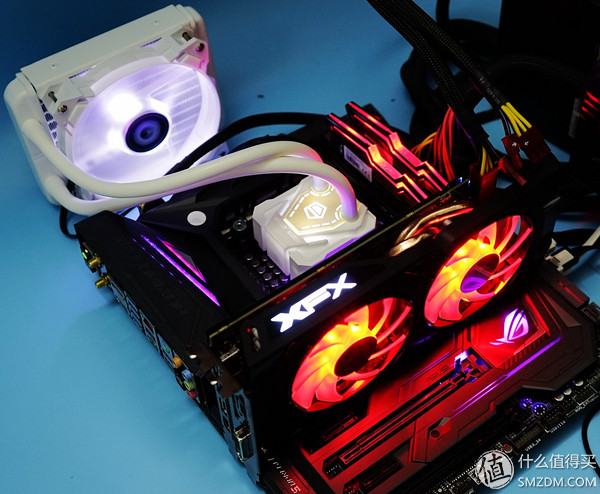
Before testing, please talk about the power limitation problem of AMD graphics cards. Previous AMD graphics card power than the same level of NVIDIA graphics card much larger problems have been criticized by players. In order to change this bad impression, AMD has made various restrictions on the graphics card power. In addition to improving the core architecture and process technology, the quickest and most effective method is to use the Boost mechanism to limit power. AMD graphics cards have a basic GPU core frequency and a Boost frequency. Under normal circumstances, the actual running frequency of the GPU core of the AMD graphics card is between the basic frequency and Boost frequency. As for which frequency is closer, it is The power limit determines that, anyway, the power should not exceed the TDP power defined in the BIOS. Once there is a trend that exceeds the TDP power, the Boost mechanism will automatically reduce the frequency to control the power. So as long as you use GPU-Z software to monitor the GPU core frequency in the background you can find that the actual running frequency of the GPU core is always fluctuating. If the power limit is relaxed and the GPU core of the graphics card has been running at the highest frequency of Boost and not exceeding the power cap, then the GPU core frequency will remain stable at the highest frequency of Boost, and the performance of the graphics card is also the strongest. If the power cap is set tightly, even if you put the GPU core frequency up, the actual operating frequency will drop quickly. For example, for the public version of the RX 470, the TDP limit is only 120W. If you overclock the GPU core frequency to 1280MHz, the frequency will start to rush up, but it will automatically fall back because of exceeding the power limit. Therefore, the actual operating frequency is not 1280MHz. . The same is true for overclocking to 1380MHz. Although it is possible to run points, the score is not much higher than the default 1206MHz frequency. Let's look at the actual test.
1, the default frequency performance test:
Crimson Limited Edition RX 470 default GPU core frequency is 1280MHz, compared to the public version of 1206MHz increased 74MHz, memory frequency is the same as all 7000MHz, both seemingly only GPU core frequency difference. However, the most critical issue is that the power limit of the graphics card has been adjusted in the BIOS of the Crimson Limited Edition RX 470, which has been increased from the 120W of the public version to 150W. Therefore, the GPU core frequency of the Crimson RX 470 will always be stable at 1280MHz, so the actual performance is much better than the public version of the RX 470 overclocked 1280MHz.
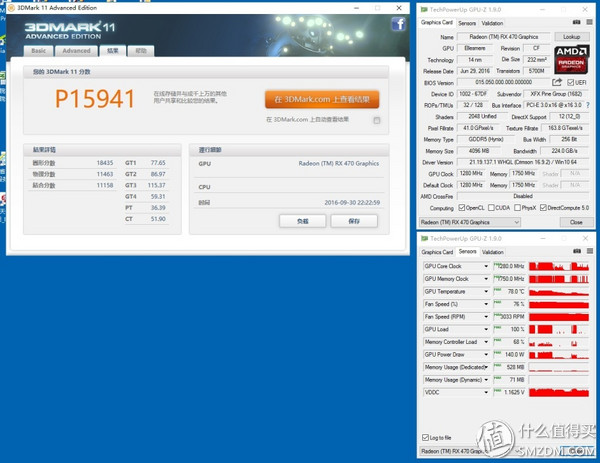


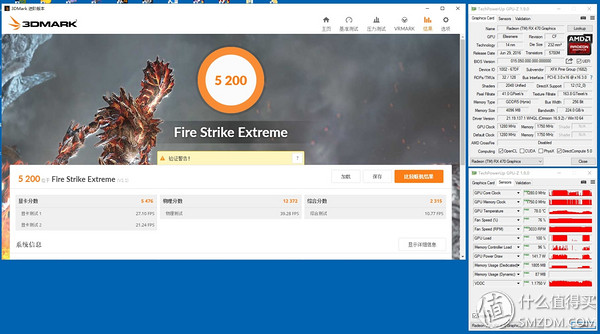
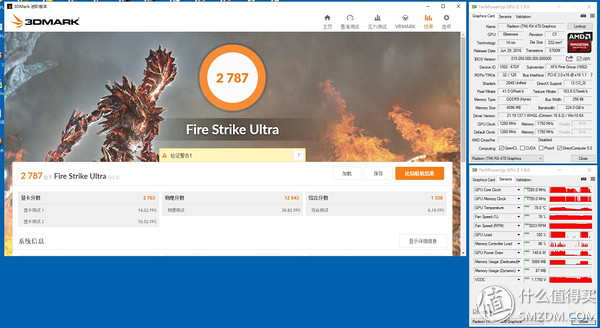
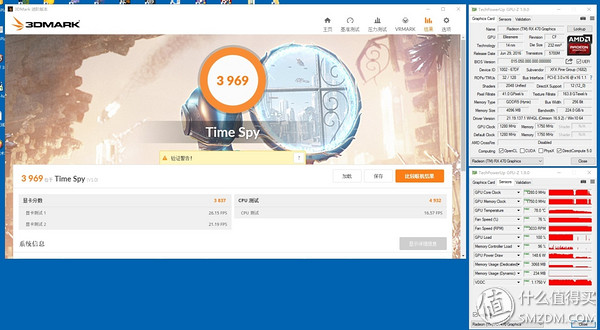
2, overclocking performance test under the original BIOS:
Since the BIOS has already relaxed the upper power limit to 150W, the RED Core Limited Edition RX 470 is overclocked to 1380/7400MHz, and the GPU core frequency can still operate stably at 1380MHz. However, the power of the entire card has reached 150W. Above, it is already equal to RX 480. If you use the default power limit or 120W version of the public version of the RX 470 for overclocking, after overclocking to 1380/7400MHz, although the GPU core frequency can reach 1380MHz in an instant, but will soon trigger the power limit and automatic frequency reduction, so The actual performance improvement is not great, even lower than before the overclocking. The third-party overclocking software currently available on the RX 470 I have not yet found, and the Wattman overclocking capabilities of AMD's own drives can increase the GPU and memory frequency, but cannot increase the power cap. Although there is an option to increase the upper power limit by 50% in the global Wattman, it is invalid after I measured it, and it is not known whether the future driver will be corrected.

(The option to increase the power cap 50% in the global Wattman that comes with the AMD driver is invalid)
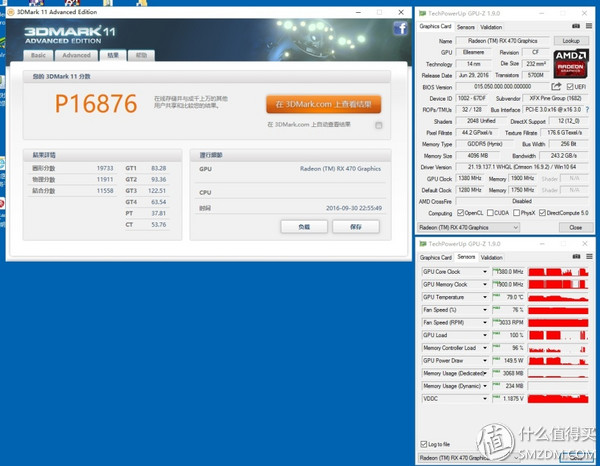





3DMark's test adds a full support for DX12 TimeSpy test part, in addition to the VRMARK part specifically for VR. VRMARK test can only work after connecting the VR heads, and it is only a preview version. There are no specific scores. So when doing VRMARK test, I used the method of running Fraps software in the background and recording the average number of frames to do the performance comparison.
In the test, I first discovered the improvement of the video card fan strategy. Before I tested the black wolf evolution RX480, I had already complained about it. At that time, the fan strategy was very painful and the fan was stopped when I was on standby. This is very good. , But actually we have to wait until the GPU core temperature reaches 78 °C when the fan started to start, is it to provide players with video card frying eggs with the added benefits? When the GPU core temperature dropped below 78°C, the fan quickly stopped again. This strategy is not scientific enough. The fan strategy of the Crimson version of the RX 470 has been significantly improved. When the GPU core temperature reaches 58°C, the fan starts to start, and the fan is started first. When the two fans cannot be solved, the strategy is obviously more reasonable. When the temperature drops below 58°C, the fan does not stop immediately, but the two fans simultaneously decelerate and slow down to below 1000 RPM before they stop at the same time. In terms of improvements to the fan strategy, you should like it. The second problem I found was the problem of overclocking in video memory. Although memory is based on SKHynix Hynix's AJR-ROC particles, the theoretical default frequency has reached 7000MHz, and this particle can often be overclocked to over 8200MHz on NVIDIA graphics cards. However, due to AMD graphics memory controller problems, this particle used in AMD graphics cards will significantly reduce the overclocking rate, the ultimate overclocking stable operating frequency on this RX 470 graphics memory is 7400MHz.
Summary of test results:

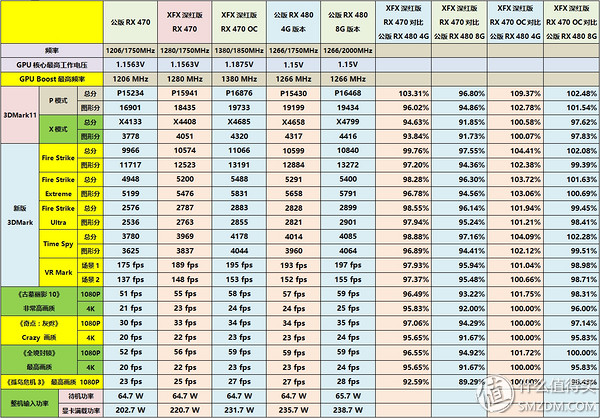

From the above test results can be seen:
1 At the default frequency, the Crimson version of the RX 470 is about 9% better in performance than the public version of the RX 470, while the full-load power is also increased by nearly 20 watts compared to the public version of the RX 470. The Crimson version of the RX 470 is about 10% better in performance than the high-frequency version of the GTX 970, while the performance lead in VR is 40%. The Crimson version of the RX 470 can achieve approximately 97% of the performance of the public version of the RX 480 4GB version and 93-94% of the performance of the public version of the RX 480 8GB version.
2 After overclocking to 1380/7400MHz, the GPU core frequency of the Crimson Limited Edition RX 470 can always run stably at 1380MHz, and the power of the entire card also reaches more than 150W. Compared with the high-frequency version of the GTX 970, the performance is about to lead 17 About %, it can reach approximately 101-102% of the performance of the public version of the RX 480 4GB version and 98-99% of the performance of the public version of the RX 480 8GB version.
3 Although the performance is very good, but in the temperature control on the deep red version of the RX 470 is somewhat inadequate, the default frequency of full load GPU core temperature up to 78 °C, after overclocking to 1380/7400MHz, the GPU core full load temperature is more It is up to 84°C, and the maximum fan speed is over 3000RPM. Even if placed inside the chassis, you can hear some noise. I personally think that in the fan strategy can be further optimized, reduce the critical temperature of the fan to start, to avoid the accumulation of heat before passive cooling.
Finally, we need to remind everyone that the overclocking function that comes with the AMD driver is not valid for the RX 470. The option to increase the power limit by 50% is actually invalid. Without overpowering, overclocking is basically pointless. The Boost mechanism of the AMD graphics card is to set a power cap in the BIOS by controlling the frequency to limit the power. This default power cap value is set very cleverly to obtain the best performance at the current highest Boost frequency. However, if the power limit is triggered after overclocking and the frequency is automatically down-converted, the higher the frequency, the lower the performance. This has to look at how AMD adjusted in the future drive. If you don’t believe it, you can overclock your RX 470 to 1380MHz and run 3DMARK to see the score.
★ chief life home perspective ★
First, the advantages and disadvantages of the Crimson Limited Edition RX 470:
1, advantages: 5 + 1 phase power slightly stronger than the public version of the RX 470; fourth generation cool soul heat sink regardless of facial value or performance is better than the public version of the radiator, and the fan uses a "PCB contact type" easy to clean Design, can be completely removed from the wire to remove the fan to clean, the other is the fan strategy is more reasonable than before; GPU core constitution is very good, Polaris 10 core maximum operating frequency is difficult to exceed 1.4GHz, and the deep red version of the RX 470 The GPU core can run stably at 1.38GHz, and the original BIOS has already raised the power limit to 150W, truly releasing the overclocking potential of the RX 470.
2, Disadvantages: radiator size is low, although the thermal performance is better than the public version, but the face is the current default high frequency RX470, at room temperature 30 °C environment, full load GPU maximum temperature reached 78 °C, and The fan speed exceeds 3000 RPM and there is a certain amount of noise, so I think the specification of this radiator is low. If you replace the 4 to 5 heat pipe radiator with larger fins, the radiator will be more reasonable. Another shortcoming is that the overclocking ability of the memory is really not good. To be honest, the overclocking potential of the SK hynix Hynix GDDR5 memory chip is very good on NVIDIA graphics cards. The default 7000MHz is no problem on the 8400MHz, but it is now used on AMD graphics cards. Only on the 7400MHz.
Second, buy advice:

The emergence of the RX 470 makes the RX 480 4GB version awkward. The memory capacity of the two is as large as the performance is very close. The RX 470 4GB overclocking is almost the same performance as the RX 480 4GB, and the prices of the two are still different. About 200 yuan. Therefore, the emergence of the RX 470 is actually equal to the original very messy RX 480 VS GTX 1060 dispute continues to add to the confusion, in a range of prices at the same time a variety of optional graphics card is indeed a very distressing thing. My personal suggestion is:
1, RX 470 performance, cost-effective, energy consumption ratio is significantly better than NVIDIA's previous generation of GTX 970/960 graphics card, Maxwell's generation of graphics cards in addition to the low-end GTX 750/750Ti/950 has not yet been threatened by a new generation of Pascal In addition, the rest of the models are not worth considering, unless there is an avalanche price before the delisting, for example, the GTX 970 cuts the price to less than 1,200 yuan. It is said that GTX 1050Ti will be listed, then GTX 960 is estimated to have reduced to 800 yuan to buy value.
2, in the 3-4GB memory RX 470/480 and GTX 1060 choice, firmly abandoned RX 480 4GB, because the worst price/performance ratio. In terms of performance, the GTX 1060 3GB is obviously stronger than the RX 470 4GB, and the RX 470 4GB can only reach the GTX 1060 3GB performance level after significant overclocking. Compared with the GTX 1060 3GB, the only advantage of the RX 470 4GB is the additional 1GB of memory. Do not underestimate the 1GB of video memory. If the memory usage is just over 3GB, it is often mad at the 1GB memory. Currently graphics cards in the 1500 yuan price range, want to run smoothly in the 4K resolution current large-scale games are unrealistic, so the chance of using full 4GB memory is very low, this grade of graphics card is still recommended in 1080P or 2K resolution Rate is used, but there are also a few games such as GTA5 with the highest effects at 2K resolution that can burst 3GB of video memory. So the choice of graphics card also combined with what you usually like to play games, if the memory of these games occupy just over 3GB, then it is best to choose more 1GB memory RX 470. If you are willing to reduce some of the special effects to control the memory occupancy within 3GB, combined with the GTX 1060 3GB performance advantage, and there is a good overclocking potential, then the GTX 1060 3GB cost-effective than the RX 470 4GB higher. My suggestion is to either choose the cheapest GTX 1060 3GB or choose the default high frequency RX 470 4GB.
3, in the 6-8GB memory RX 470/480 and GTX 1060's choice, firmly abandoned RX 470 8GB, 8GB video memory to the RX 470 this level of graphics is completely wasted, the price of 1799 yuan no price. For this level of graphics card, 6GB of video memory is actually enough, combined with performance and overclocking potential considerations, GTX 1060 6GB price than the RX 480 8GB higher.
Finally, there is a ladder diagram of the latest graphics performance of the Black Mountain old demon version. Thank you for watching.
